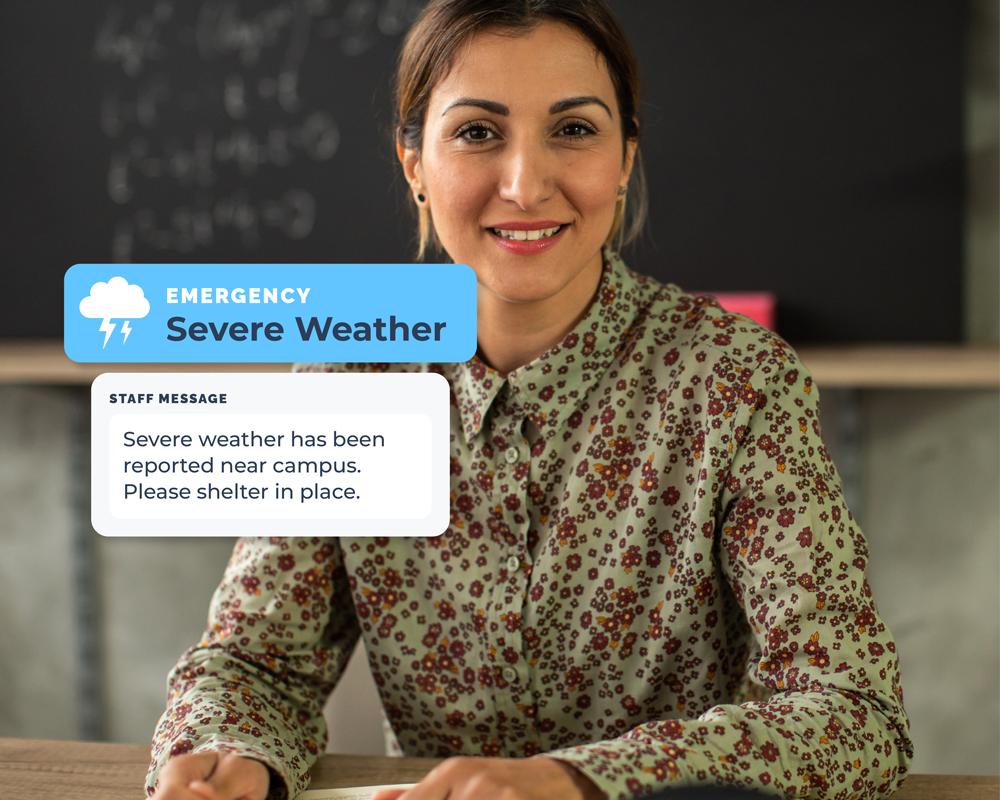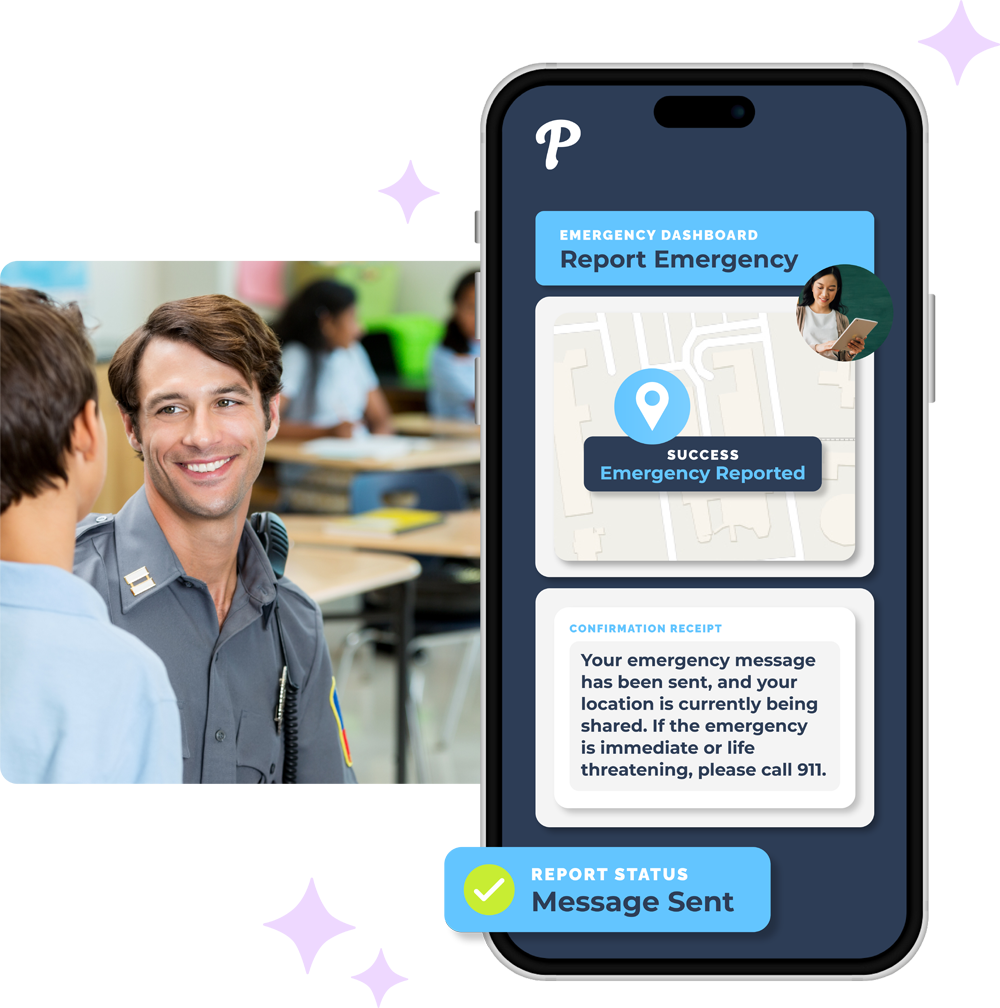Education is evolving faster than ever. From personalized learning paths to AI-driven classrooms, schools must adapt or risk falling behind. Modern students live in a world shaped by rapid innovation, diverse learning styles, and constant connectivity. To meet their needs, schools must reimagine how learning happens—not just in classrooms, but across entire campuses. Adapting to change isn’t just about keeping up with technology. It’s about creating an environment where students thrive, educators feel supported, and administrators can confidently lead through transformation. This shift requires more than new tools. It demands a flexible mindset and systems that evolve alongside educational needs.
In our Future-Proofing Education: Preparing Your Campus for 2026 and Beyond blog, we explored how forward-thinking schools are building long-term readiness. Now, we take that vision further—focusing on how campuses can adapt dynamically to modern challenges while preparing students for the future.
The Modern Student: A Catalyst for Educational Change
Today’s students aren’t just digital natives; they are digital navigators. They consume information differently, expect personalization, and thrive on flexibility. Traditional, one-size-fits-all education no longer works. Modern learners need individualized pathways that reflect their strengths, interests, and pace. Whether through adaptive learning platforms, online classrooms, or hybrid instruction, personalization has become the foundation of engagement. When learning feels relevant and tailored, students become active participants rather than passive recipients.
But personalization isn’t only about software or dashboards. It’s about giving educators the data and tools to respond to each student’s needs in real time. Schools that succeed in adapting to change do so by aligning their systems, policies, and culture around this philosophy. The student is no longer at the center of education by name only. They are at the center by design.
The Shift Toward Personalized Learning Paths
Personalized learning allows educators to meet students where they are and guide them toward mastery. Technology plays a key role, offering data-driven insights into progress and engagement. AI-powered systems can now adjust assignments, recommend resources, and identify gaps faster than traditional methods. This approach transforms teaching from a standardized process into a responsive journey. Students gain ownership of their progress, while teachers receive actionable data to guide instruction.
For administrators, these tools streamline resource allocation and professional development. Personalized learning doesn’t replace teachers; it amplifies their impact. With the right systems, educators can focus more on mentoring and less on managing. Adaptability begins here—with tools that empower teachers and inspire students to pursue their potential without limits.
Remote and Hybrid Learning: Expanding Access and Flexibility
The pandemic accelerated the evolution of remote learning, pushing schools to rethink access, equity, and engagement. What started as an emergency response has become a lasting feature of modern education. Hybrid and remote models allow schools to reach diverse learners, including those balancing extracurriculars, health challenges, or unique learning needs. When implemented strategically, these models enhance flexibility and inclusion without compromising quality.
Schools that embrace adaptive technology can deliver consistent learning experiences both in person and online. Unified communication systems allow teachers to interact seamlessly with students across formats, ensuring no learner is left behind. Cloud-based platforms also give administrators real-time oversight, helping them track engagement, attendance, and progress. The key is integration. Disconnected tools create confusion, while integrated solutions simplify operations and foster continuity between physical and digital classrooms.
As schools adapt to hybrid models, the goal remains clear. Learning should be accessible, engaging, and secure—anywhere, anytime.
The Rise of AI-Powered Tools in Education
Artificial intelligence is redefining how schools teach, operate, and protect. AI tools can analyze student data, predict performance trends, and offer proactive insights that guide instruction. They can also reduce administrative burdens, automating attendance, scheduling, and safety monitoring so educators can focus on teaching.
In learning environments, adaptive AI platforms create personalized content paths based on each student’s progress and learning style. For struggling students, AI can identify issues early and suggest interventions before challenges grow. It also supports inclusion. Translation tools, voice recognition, and accessibility enhancements ensure every student can participate fully, regardless of background or ability.
However, adopting AI isn’t only a technological decision—it’s a strategic one. Schools must ensure transparency, data security, and ethical use in every implementation. By pairing innovation with accountability, districts can harness AI’s potential without compromising trust or safety.
Building Systems That Adapt Alongside Students
Change in education doesn’t happen overnight. It’s a gradual evolution that requires flexible systems and open communication across all stakeholders. Schools that thrive through transformation share one trait: adaptability built into their foundation. This means integrating platforms that connect people, data, and processes—from classroom learning to school safety.
Modern educational systems must be interoperable. Data from learning management systems, communication tools, and safety applications should work together to give leaders a complete view of operations. When systems talk to each other, decision-making becomes faster, clearer, and more informed. Educators can spend less time managing technology and more time engaging students. Adaptation also requires scalable infrastructure. As student populations, technologies, and expectations evolve, schools need platforms that grow with them—not against them.
Supporting Educators Through Transformation
Technology is only as effective as the people using it. Supporting educators through change is one of the most critical steps in long-term adaptation. Teachers need training, time, and trust to embrace new systems. Professional development should focus not just on functionality but on purpose—how tools enhance learning outcomes.
Districts that foster collaboration among teachers and tech teams often see faster adoption and stronger results. When educators understand how technology empowers them rather than replaces them, their confidence becomes contagious. Creating feedback loops where teachers share insights helps refine implementation strategies. This continuous improvement cycle keeps change sustainable and aligned with real classroom needs.
Safety and Operations: The Backbone of Modern Learning Environments
Adapting to change extends beyond instruction. It also encompasses how schools manage safety, communication, and emergency response. Modern campuses require integrated platforms that protect students, staff, and visitors while maintaining operational efficiency. Tools like digital hall passes, visitor management systems, and real-time emergency alerts ensure campuses remain secure and compliant.
When these systems are unified under a single platform, they do more than monitor—they empower swift, informed action. During emergencies, AI-powered alerts and automated notifications can reach parents, staff, and first responders instantly. Safety and learning are intertwined. A secure environment builds confidence, allowing educators and students to focus on growth. Technology doesn’t replace human care; it enhances it, ensuring schools are ready for anything, every day.
Collaboration Between Technology and Leadership
Successful adaptation depends on leadership that sees beyond immediate needs. Administrators play a vital role in aligning technology investments with educational goals. Collaboration between IT teams, educators, and district leaders ensures tools are implemented with purpose. Each new solution should be evaluated not just for its features but for its ability to integrate, scale, and simplify.
Modern leadership is both visionary and practical—blending innovation with empathy. By championing adaptable ecosystems, leaders create cultures where technology supports connection, creativity, and continuous improvement. Schools that balance people-first leadership with smart technology choices set the tone for long-term success.
Preparing for What Comes Next
The pace of change in education will only accelerate. Emerging technologies—from predictive analytics to immersive learning environments—will continue reshaping how schools operate. Yet the mission remains constant: prepare students for a world that doesn’t stand still. Adapting to change means building systems that anticipate needs before they arise. It means empowering every stakeholder—from students to superintendents—with tools that enable progress.
Schools that invest in adaptability today will define the standard for tomorrow. They’ll move beyond reacting to change and start leading it.
The Road Ahead: From Adaptation to Transformation
Adapting to change isn’t a one-time initiative. It’s an ongoing commitment to progress. When schools view change as opportunity rather than disruption, transformation becomes part of their identity. Each step toward personalization, integration, and innovation strengthens the foundation for future learning.
With the right solutions, schools can simplify daily operations, protect their communities, and deliver experiences that prepare every student for success. The modern student deserves an environment as dynamic as their potential. By embracing adaptable technologies and forward-thinking strategies, educators can turn that vision into reality.
Change will always come—but with preparation, purpose, and partnership, schools can ensure it leads to lasting improvement. Because the future of education isn’t about keeping up. It’s about leading the way.



